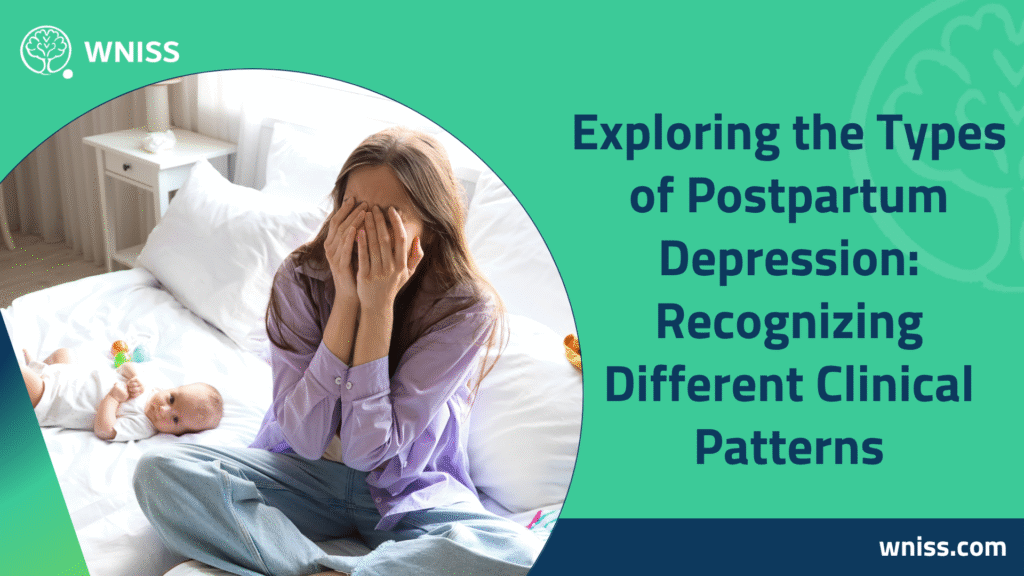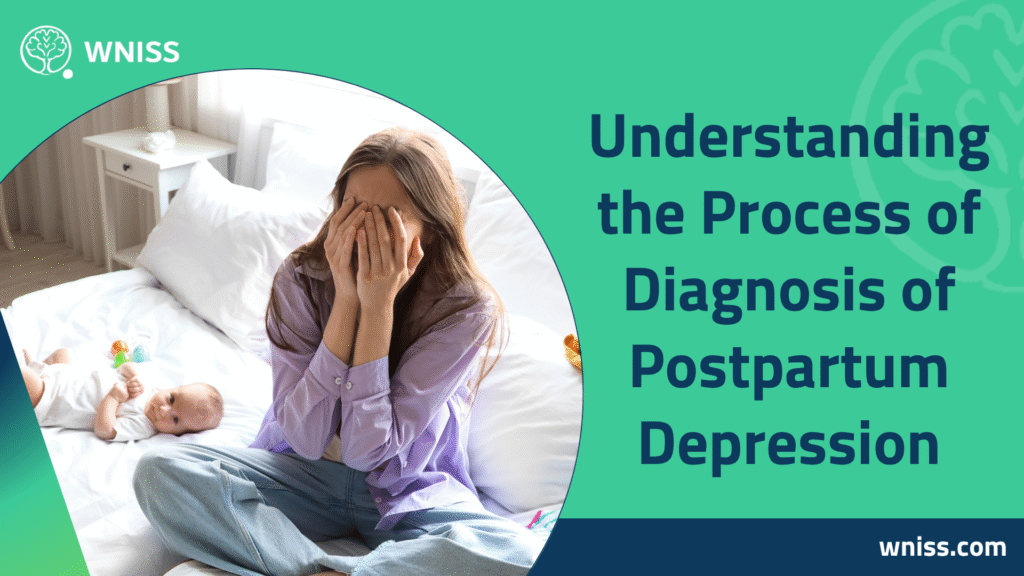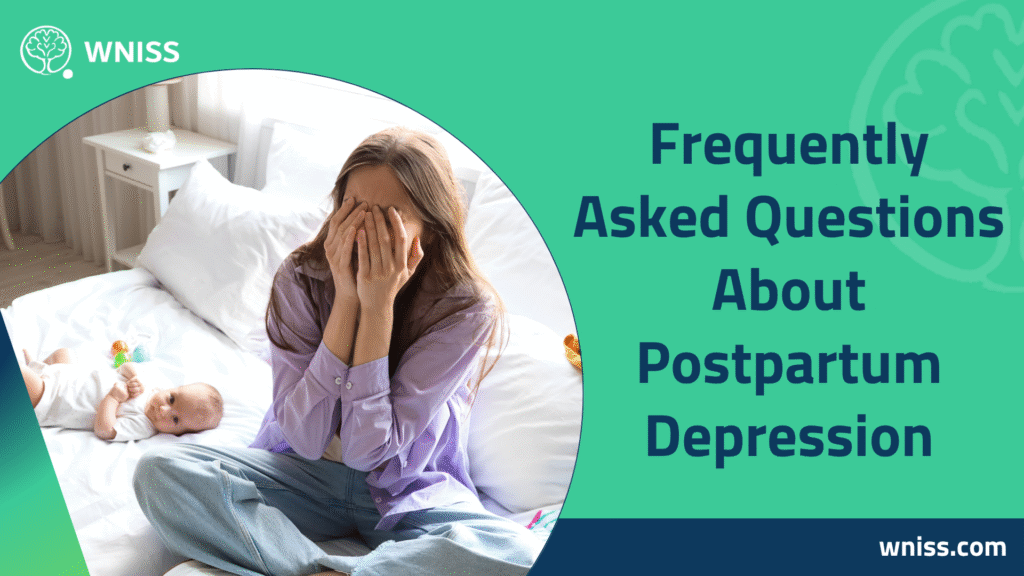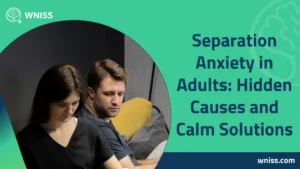For many new mothers, childbirth is often imagined as a joyful moment marking the start of motherhood. However, the reality for countless women can be very different. Postpartum depression is a serious and debilitating mental health condition that occurs after childbirth, bringing with it overwhelming feelings of sadness, exhaustion, and emotional detachment from the newborn. Unlike the brief and commonly experienced “baby blues,” which typically resolve within two weeks after delivery, it’s lingers far longer and severely impacts a mother’s ability to care for herself and her child. It is important to recognize that postpartum depression does not imply weakness or failure as a mother. Instead, it is a medical condition requiring understanding, support, and treatment.
The emotional and physical exhaustion following childbirth, coupled with hormonal fluctuations and the overwhelming responsibility of newborn care, often contribute to the onset . This condition does not discriminate based on social status, education level, or personal strength. While some women may notice symptoms immediately after delivery, others might experience them gradually over weeks or months, which underscores the importance of understanding that postpartum depression can appear unexpectedly at any stage after birth.
The stigma surrounding maternal mental health can make it even more challenging for women to speak openly about their struggles. Many suffer in silence, believing they should feel nothing but joy during this period, which delays necessary interventions. Thus, addressing it openly helps demystify the condition, enabling early recognition and appropriate treatment.
Exploring the Types of Postpartum Depression: Recognizing Different Clinical Patterns
Delving into the types of postpartum depression reveals a spectrum of emotional and psychological challenges that new mothers may face. Broadly, healthcare professionals classify it into the following categories:

- Postpartum Blues (Baby Blues): Though technically not classified as depression, this common condition affects up to 80% of new mothers within the first few days after childbirth. Symptoms include mood swings, anxiety, irritability, and tearfulness, typically resolving without treatment within two weeks.
- Postpartum Depression: This is the most serious and prolonged form, beginning anywhere from a few days to months after childbirth. Symptoms are more severe than baby blues, encompassing intense sadness, feelings of hopelessness, loss of interest in daily activities, and difficulty bonding with the baby.
- Postpartum Psychosis: A rare yet life-threatening condition, postpartum psychosis occurs in about 1 or 2 out of every 1,000 deliveries. Symptoms include hallucinations, delusions, extreme agitation, and confusion. This form requires immediate medical attention.
Understanding the types of postpartum depression is essential for both mothers and healthcare providers to ensure timely identification and effective treatment, preventing the condition from escalating into more severe mental health crises.
Investigating the Causes of Postpartum Depression: Factors Behind the Emotional Descent
When examining the causes of postpartum depression, it is clear that no single factor is solely responsible for its development. Instead, a combination of physical, emotional, and environmental factors interplay to create this mental health challenge. Key causes of it include:
- Hormonal Changes: After childbirth, significant drops in estrogen and progesterone levels may lead to mood instability. These hormonal shifts can trigger depression similarly to premenstrual syndrome, but with far more intensity.
- Emotional Stressors: The stress of adapting to a newborn’s needs, combined with sleep deprivation and lifestyle changes, can overwhelm even the most prepared mothers, contributing to the development of it.
- Personal or Family History: Women with a personal or family history of depression, anxiety, or other mood disorders are at a higher risk.
- Physical Recovery: Pain from childbirth, whether via vaginal delivery or cesarean section, along with physical exhaustion, impacts mental well-being, exacerbating emotional struggles.
- Lack of Support: Limited assistance from partners, family, or friends leaves new mothers isolated, increasing vulnerability to depression.
- Complications in Birth or Baby’s Health: Challenges such as premature birth, infant health issues, or difficult labor can heighten emotional distress.
Altogether, understanding the causes of postpartum depression enables both prevention and better management, offering hope to mothers by demystifying the reasons behind their emotional turmoil.
Identifying the Symptoms of Postpartum Depression: Warning Signs Not to Ignore
Recognizing the symptoms of postpartum depression is critical to ensuring prompt diagnosis and intervention. Though symptoms may vary in intensity and duration, common indicators include:
- Persistent feelings of sadness, emptiness, or hopelessness
- Severe mood swings and irritability
- Inability to bond with the newborn or feelings of disconnection
- Excessive crying without apparent cause
- Withdrawing from family and friends
- Insomnia or oversleeping
- Loss of appetite or overeating
- Overwhelming fatigue or energy loss
- Feelings of worthlessness, guilt, or inadequacy
- Anxiety or panic attacks
- Difficulty concentrating or making decisions
- Thoughts of harming oneself or the baby
The presence of any combination of these symptoms of postpartum depression, particularly when persistent and interfering with daily functioning, signals the need for professional evaluation and support.
Understanding the Process of Diagnosis of Postpartum Depression
Accurate diagnosis of postpartum depression is essential for effective treatment. Healthcare professionals typically rely on several diagnostic tools and clinical interviews to identify this condition:

- Medical and Psychological History: Assessment includes evaluating any prior history of depression, anxiety, or related disorders.
- Symptom Evaluation: Healthcare providers use specific questionnaires like the Edinburgh Postnatal Depression Scale (EPDS) to quantify the severity of symptoms.
- Physical Examination: Doctors assess physical health to rule out underlying medical conditions that might mimic depressive symptoms.
Given the stigma associated with mental illness, many women underreport their symptoms. However, early and accurate diagnosis of postpartum depression provides the critical foundation for recovery and improved quality of life.
Taking a Depression Test: A Tool for Self-Assessment and Awareness
Although self-assessment tools like a depression test cannot replace a professional diagnosis, they can play a vital role in encouraging new mothers to seek help. By answering questions about emotional states, energy levels, eating and sleeping habits, and personal thoughts, mothers can assess whether they may be at risk for postpartum depression.
A depression test serves as an initial indicator, guiding individuals toward professional consultations. It’s important to view the results not as definitive diagnoses, but rather as insights highlighting the need for further evaluation and support.
Strategies for the Prevention from Postpartum Depression
While not every case of postpartum depression is preventable, adopting proactive strategies can significantly reduce the risk. Effective methods for prevention from it include:
- Prenatal Education: Learning about the realities of childbirth and newborn care reduces anxiety and prepares mothers mentally and emotionally.
- Establishing a Support System: Cultivating strong support networks, including family, friends, and professional caregivers, alleviates the sense of isolation.
- Prioritizing Rest: Arranging for regular sleep and rest periods, even short naps, restores energy and balances emotional well-being.
- Communicating Feelings Openly: Discussing emotions with loved ones or healthcare providers diminishes the burden of bottled-up feelings.
- Attending Postpartum Checkups: Regular follow-ups with healthcare professionals help monitor emotional health and address emerging symptoms promptly.
- Practicing Self-care: Engaging in activities that bring joy and relaxation, even if briefly, fosters emotional resilience.
Implementing these strategies for prevention from postpartum depression empowers new mothers to maintain better control over their emotional health and seek timely help if symptoms emerge.
Frequently Asked Questions About Postpartum Depression

What are the struggles of postpartum?
The struggles of postpartum often involve overwhelming fatigue, mood swings, physical pain from childbirth, feelings of inadequacy as a mother, difficulties breastfeeding, and emotional isolation. Many new mothers experience guilt for not feeling the anticipated joy, compounded by sleepless nights and the constant demands of newborn care, which collectively contribute to emotional distress.
How do you deal with postpartum depression?
Dealing with postpartum depression requires a multifaceted approach that typically includes professional therapy, possible medication under medical supervision, strong emotional support from family and friends, prioritizing self-care routines, attending support groups, and ensuring adequate rest and nutrition. Early intervention and continuous professional guidance remain critical to recovery.
How long does postpartum depression last?
Postpartum depression duration varies. For some mothers, symptoms may improve within a few weeks with proper treatment. However, others may struggle for several months or even a year if left untreated. The timeline depends heavily on factors like the severity of symptoms, promptness of treatment, and availability of emotional support.
Who to call postpartum depression?
New mothers should consult their obstetrician, general physician, or mental health professional if experiencing signs of postpartum depression. Hotlines and local mental health services also provide immediate support. Family members can assist by encouraging professional consultations to initiate treatment.
What does postpartum depression feel like?
Postpartum depression feels like persistent sadness, emotional emptiness, anxiety, and detachment from the newborn, accompanied by overwhelming fatigue and hopelessness. Many women feel trapped in a cycle of guilt, believing they are failing as mothers, while physical exhaustion intensifies emotional numbness and disinterest in previously enjoyed activities.
Why is postpartum so serious?
Postpartum depression is serious because it affects not only the mother’s mental and physical health but also the newborn’s well-being. Untreated postpartum depression can hinder mother-infant bonding, impair child development, and in severe cases, lead to self-harm or harm to the infant. Immediate recognition and treatment are crucial for safeguarding both mother and child.
In conclusion, postpartum depression is a profoundly challenging yet highly treatable condition affecting countless new mothers worldwide. By understanding the types of postpartum depression, exploring the underlying causes of postpartum depression, recognizing the critical symptoms of postpartum depression, pursuing accurate diagnosis of postpartum depression, utilizing a depression test, and adopting strategies for prevention from postpartum depression, women can reclaim their emotional well-being and fully embrace motherhood. Awareness, support, and timely treatment are key to transforming the journey through postpartum into one of healing, strength, and hope.




